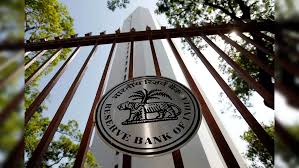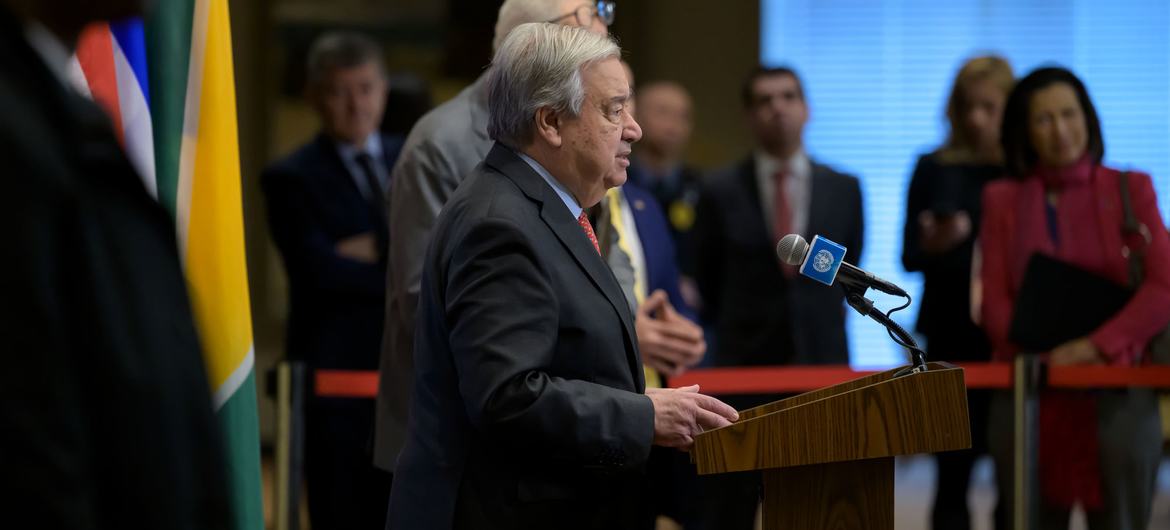Axiom Mission 4 (Ax-4)

- 30 Jun 2025
In News:
India marked a historic moment in space exploration as Group Captain Shubhanshu Shukla became the first Indian to reach the International Space Station (ISS), 41 years after Rakesh Sharma’s 1984 mission.
Organizations Involved:
- Axiom Space – Mission organizer
- NASA – ISS host and operations support
- SpaceX – Provided Falcon 9 launch vehicle and Dragon capsule
Launch Details:
- Launch Date: June 25, 2025
- Launch Site: Launch Complex 39A, Kennedy Space Center, Florida
- Mission Duration: ~14 days aboard the ISS
Mission Objectives:
1. Scientific Research in Microgravity:
- Over 60 research experiments conducted across:
- Life sciences
- Material sciences
- Human physiology
- Earth observation
2. International Space Cooperation:
- Promotes global collaboration in low-Earth orbit science.
- Supports capacity-building for emerging space nations, including India, Poland, and Hungary.
3. National Space Program Development:
- Enables participating nations to strengthen human spaceflight capabilities.
- Acts as a stepping stone for India’s Gaganyaan and future space station plans.
Significance for India:
- Revival of Human Spaceflight:
- Marks India’s return to human space missions after four decades.
- Reinforces India's presence in international human space exploration.
- Boost to Gaganyaan Mission:
- Offers valuable operational experience and technical collaboration.
- Supports India’s vision to launch Gaganyaan, its first indigenous human spaceflight mission.
- Long-Term Space Ambitions:
- Aids India’s goal to establish its own space station by 2035.
- Positions India as a partner in space science diplomacy and global research.
- Scientific Prestige:India contributes to key microgravity experiments, enhancing its global research footprint in space.
Banakacherla Reservoir Project Dispute
- 30 Jun 2025
In News:
A fresh inter-state water dispute has surfaced between Telangana and Andhra Pradesh, with Telangana accusing Andhra Pradesh of violating provisions of the Andhra Pradesh Reorganisation Act, 2014 through its proposed Banakacherla Reservoir Project.
About the Banakacherla Reservoir Project
- Location: Banakacherla, Nandyal district, Andhra Pradesh
- Implementing State: Andhra Pradesh
- Objecting State: Telangana
- Purpose: To divert surplus Godavari river water to the drought-prone Rayalaseema region via the Krishna river system.
Key Features of the Project:
River Diversion and Infrastructure Upgrades:
- Polavaram Right Main Canal capacity to be increased from 17,500 to 38,000 cusecs.
- Thatipudi Lift Canal capacity to be enhanced from 1,400 to 10,000 cusecs.
- New reservoir at Bollapalli, with a tunnel through the Nallamala forest to transfer water to Banakacherla.
Lift Irrigation Points:
Five major lift stations planned:
- Harischandrapuram
- Lingapuram
- Vyyandana
- Gangireddypalem
- Nakirekallu
Inter-Basin Linkage:
- Connects Godavari → Krishna → Penna rivers.
- Aims to ensure water availability in Rayalaseema and address regional droughts.
Telangana’s Objections
1. Violation of the AP Reorganisation Act, 2014:Telangana alleges the project bypasses the statutory requirement of prior approval for new inter-basin water projects between the successor states.
2. Absence of Statutory Clearances:
- The project has not been cleared by:
- Krishna River Management Board (KRMB)
- Godavari River Management Board (GRMB)
- Central Water Commission (CWC)
3. Godavari Tribunal Allocation Overlooked:
- Telangana cites the Godavari Water Disputes Tribunal award which allocated 968 TMCft to the state out of 1,486 TMCft.
- Telangana argues that “surplus water” claims lack formal quantification or agreement.
4. Potential Impact on Telangana Projects:Telangana fears that Andhra’s diversion plan will affect its own irrigation schemes and reservoirs dependent on Godavari inflows.
Broader Implications
- This dispute underscores the growing tensions over inter-basin water transfers in India, especially in the context of climate variability and regional water stress.
- It highlights the need for:
- Transparent interstate coordination
- Functioning river boards
- Expedited dispute resolution mechanisms
RBI Eases Priority Sector Lending (PSL) Norms for Small Finance Banks (SFBs)

- 30 Jun 2025
In News:
In a major policy shift aimed at enhancing financial flexibility, the Reserve Bank of India (RBI) has reduced the Priority Sector Lending (PSL) target for Small Finance Banks (SFBs) from 75% to 60% of their Adjusted Net Bank Credit (ANBC).
What Has Changed?
Previous Norms:
- SFBs were required to allocate 75% of ANBC towards PSL.
- An additional 35% PSL requirement applied beyond the standard 40% applicable to universal banks.
- These strict targets led to:
- Difficulty in sourcing quality borrowers.
- Compressed profit margins.
- Limited portfolio diversification.
Revised Norms (2024):
- Overall PSL target reduced to 60% of ANBC.
- Additional PSL requirement brought down from 35% to 20%.
- Sub-sector allocation remains: SFBs must continue to dedicate 40% of ANBC to core PSL sectors such as agriculture, MSMEs, and weaker sections.
Objective of the Reform
- Enhance lending flexibility for SFBs.
- Improve asset quality and profitability by allowing portfolio diversification.
- Align SFB regulations more closely with those of other banks, without compromising on financial inclusion goals.
About Small Finance Banks (SFBs)
Origin and Mandate:
- Conceptualised by the NachiketMor Committee (2013).
- Regulated under the Banking Regulation Act, 1949.
- Created to expand financial inclusion by targeting:
- Small and marginal farmers,
- Micro and small enterprises (MSMEs),
- Unbanked and underserved populations.
Key Features:
- Offer basic banking services, including all deposit and small-ticket loan products.
- Operate on a localised model with strong rural and semi-urban outreach.
- Permitted to distribute non-risk sharing financial products like mutual funds and insurance.
Regulatory Requirements:
- At least 25% of branches in rural areas.
- Minimum 50% of loan portfolio must serve the MSME sector.
- Minimum net worth: ?100 crore at inception, to be raised to ?200 crore within 5 years.
- Maintain a Capital Adequacy Ratio (CAR) of 15% on risk-weighted assets.
Significance of the Move
- Offers SFBs greater operational autonomy and room to grow sustainably.
- Aims to balance developmental goals with commercial viability.
- Expected to promote credit flow to priority sectors while ensuring sound financial health of these institutions.
UN80 Initiative

- 30 Jun 2025
In News:
In a significant move towards institutional transformation, UN Secretary-General António Guterres has launched the UN80 Initiative, aimed at overhauling the United Nations system in the run-up to the 80th anniversary of the UN Charter.
What is the UN80 Initiative?
The UN80 Initiative is a system-wide reform agenda designed to align the UN's structures, mandates, and operations with contemporary global challenges, including peacebuilding, sustainable development, and human rights.
Objectives:
- Modernize the UN architecture to improve responsiveness.
- Enhance accountability and reduce inefficiencies.
- Ensure effective delivery of core mandates in peace, development, and human rights.
Key Features of the UN80 Initiative:
1. Three Core Workstreams:
- Efficiency & Cost Reduction: Streamlining operations, eliminating overlaps, cutting administrative costs, and automating services.
- Mandate Implementation Review: Assessing the execution (not content) of over 3,600 UN mandates for effectiveness.
- Structural Reforms: Reorganizing departments and programs, especially in high-cost duty stations.
2. Formation of Thematic UN80 Clusters:
Seven thematic clusters focus on:
- Peace & Security
- Development (UN Secretariat and UN System)
- Humanitarian Affairs
- Human Rights
- Training & Research
- Specialized Agencies
3. Relocation and Rationalization:
- Proposes shifting operations from expensive cities like New York and Geneva.
- Seeks to abolish underperforming and redundant functions.
4. Budget Integration Timeline:
- Initial reforms to be reflected in the 2026 Revised Budget.
- Major structural reforms to be integrated into the 2027 Programme Budget.
Significance of the UN80 Initiative:
- Revitalizes Multilateralism: Supports the broader goals of the Pact for the Future and ensures the UN remains relevant.
- Boosts Operational Efficiency: Reduces waste, overlap, and underutilization of resources.
- Focuses on Results: Transitions from output-heavy reporting to impact-driven outcomes.
India’s Burden of Zero-Dose Children in 2023
- 30 Jun 2025
In News:
According to a recent Lancet study based on Global Burden of Disease data, India ranked second globally in terms of the number of unvaccinated or “zero-dose” children in 2023, trailing only Nigeria.
What Are Zero-Dose Children?
- The term “zero-dose children” refers to those who have not received even a single dose of any routine childhood vaccine.
- In 2023, 1.44 million children in India were identified as zero-dose, highlighting significant immunisation gaps.
Global and National Trends:
- Nigeria topped the list with approximately 2.5 million zero-dose children.
- Eight countries, including India and Nigeria, together accounted for over 50% of the global zero-dose burden.
- Globally, the number of zero-dose children dropped from 58.8 million in 1980 to 14.7 million in 2019, reflecting long-term progress.
Challenges in India:
- Despite the Universal ImmunisationProgramme (UIP) covering 12 vaccine-preventable diseases, several challenges persist:
- COVID-19 pandemic led to significant disruptions in routine immunisation.
- Vaccine hesitancy continues to undermine public health efforts.
- Geographical and socio-economic inequalities limit access to health services in certain regions.
- Between 2010 and 2019, measles vaccine coverage declined in over 100 countries, including India, further exacerbating public health risks.
